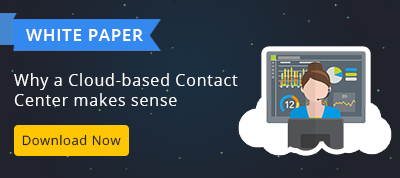The Banking industry, almost 30 years ago started using predictive dialers for debt collection. From there many other industries also started using these dialers, which started as only hardware and evolved into ones with cloud-based predictive software. There are even integrated ones with CRM systems which gives insights into call metrics.
Click here to get an overview of the complete history of predictive dialers
How it Works
Predictive dialers predict the time when agents would be available to take the next call and auto dials. Algorithms are used to calculate the time an agent would spend on a call, and then dials the next number. There have been studies which have come up with impressive statistics like
- A fourfold increase in the agent productivity
- A 42% increase in agent utilization per hour
Predictive Dialers (PD) accomplish these by doing the following-
Increase Right Party Contacts / hour
PDs dial numbers faster than humans and connect to agents only when the lines are answered. Increased call volumes lead to higher productivity using less number of agents.
Idle Time Reduction
PDs use algorithms, which estimate the average conversation times depending on the business and industry. The dialer then directs the agent a new call at roughly the time he/she takes to finish a conversation. Instead of dialing one number at a time, PD dials and keeps the line ready by the time the agent is almost finishing the present conversation. Those ways agents do not have to waste time waiting for a real live person to answer the call.
Number of Live Conversations goes up, and not just in terms of Quantity
By connecting agents after dialing a line, a PD increases not only the number of live conversations but also releases the agents from the wearisomeness of having to dial and wait, thereby paving the way for enlivened, unique human interactions.
It also increases the overall job satisfaction of the agents. Now, this diminishes the agent churn. And this, in turn, reduces the cost associated with recruiting and training new agents.
Compliance Risk Reduced
PDs, while reducing the idle time, also diminishes the inbound caller wait times. This lowers the customer abandonment rate, which successively leads in the reduction of lawsuits filed against the organization. Satisfied customers have a lesser tendency to complicate and escalate conflicts and are more open to compromise.
Risks
Though predictive dialers empower the agents, there are certain specific areas, for example in sales, where their hands are tied, because, by design these provide
- No scope for pre-call research
- Not much insight into dialing process
- Not much aid in prioritizing leads
Ensure consistent Lead follow – up
Irrespective of whether PDs are used or not, many phone based sales and marketing activities are inefficient. If the following capabilities are infused into the PDs, it will ensure the proper treatment of lead to order cycle.
- An integrated CRM database which centralizes all the contacts and leads data, giving a 360-degree view to the agents
- End – to –End history tracking, which helps the agents review the details of previous interactions, resulting in efficient future and further communication
- Callback notifications which will help the agents get automatic reminders about scheduled follow – ups
Ensuring effectiveness
It has been widely perceived that the effectiveness of the Predictive Dialers are dependent mainly on the
- Sophistication of its algorithm
- Number of workstations
- Length of the average call
- Integrated CRM and end – to – end Lead management functionality
- Recording and monitoring capabilities
- Reporting and Analysis
A proper account metric (Balance vs. Liquidation Rate; & its high – low combinations) and classification along with the appropriate dialing strategy coupled with the afore mentioned, ought to be the best approach.


